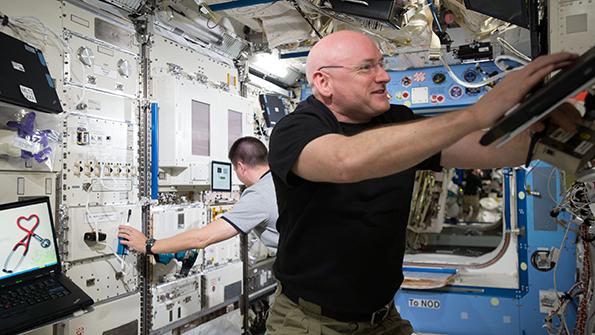
Getting through now can take a lot of energy some days, but I challenge you to look to the future: How will you describe your company post-pandemic? Mustering a carpe diem outlook and imagining a few years out can be helpful. As author Adam Grant wrote in an essay about time travel in The New York Times, “Psychologists find that looking to the future shifts our attention from the mundane ‘how’ of our days to the meaningful ‘why.’ Having an emotional target to aim for can give us a purpose and help us manage bouts of anxiety and frustration.”
Grant says this is how astronaut Scott Kelly helped cope with the isolation of spending one year in space. He envisioned how the mission would end. “My goal was to get to the end of this with the same enthusiasm and ability and energy as I had in the beginning,” Grant quotes Kelly as saying.
That requires focus, and while aviation is suffering a lot right now, many airlines and aftermarket companies are looking forward because they know air travel will resume and our industry will recover.
The pandemic can be a catalyst for change. How is your company adapting?
Here are some great examples you’ll find in this issue:
While this might surprise some, the coronavirus’ toll on sustainability efforts has not been bad (page MRO12). “In fact, we have noticed increased attention for climate” and the need for eco-friendly technology, says Hans-Stefan Niebler, MTU Maintenance’s environmental and sustainability officer.
Several large MROs around the world are continuing to work on reducing emissions and energy consumption, making maintenance processes greener and finding new technologies to reduce their footprint. The message is: Don’t cease sustainability efforts because it could put your company at a disadvantage post-recovery.
The COVID-19 crisis has also forced airlines and the aftermarket to look for new ways to comply with social-distancing requirements and remote working, which is speeding up adoption of paperless maintenance and e-signatures (page MRO26). Could the growing momentum finally propel widespread adoption?
COVID has also been the catalyst for new training technologies that can adapt content based on a learner’s behavior or performance, similar to a video game or prompts from a trainer at the gym (page MRO16). The result is better performance and more engagement.
How you will maneuver in an aircraft lavatory in the future also is being influenced by the pandemic. From touchless features to self-disinfecting lavatories to walls that expand to accommodate wheelchairs, all are in development. There are a lot of very interesting technical developments occurring—and expect new applications for narrowbody and widebody aircraft in the next few months (page MRO20).
It’s time to prepare for the future.




